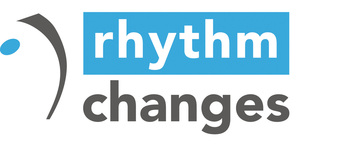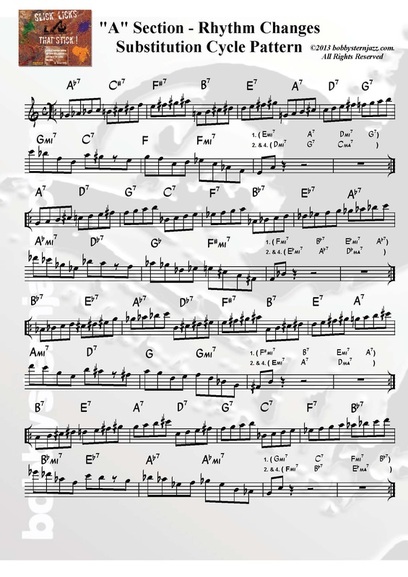
A common use for this cycle device in the jazz vernacular is as a substitute progression for the first 4 bars of each of the three "A" sections of "Rhythm Changes", the 32 bar AABA song structure based on "I Got Rhythm" by George Gershwin, on which so many bebop era standard tunes have been based.
(A1)
C Maj7 A7 // Dmin7 G7 // Emin7 A7 // Dmin7 G7 //
Gmin7/C C7/Bb / FMaj7/A Fmin7/Ab / Emin7/G A7 / Dmin7 G7/
(A2)
C Maj7 A7 // Dmin7 G7 // Emin7 A7 // Dmin7 G7 //
Gmin7/C C7/Bb // FMaj7/A Fmin7/Ab // Dmin7 G7 // C //
(Bridge)
E7 // // A7 // // D7 // // G7 // //
(A3)
C Maj7 A7 // Dmin7 G7 // Emin7 A7 // Dmin7 G7 //
Gmin7/C C7/Bb // FMaj7/A Fmin7/Ab // Dmin7 G7 // C Dmin7 G7 //
No surprises here.
If however, we build a cycle of fifths in reverse order from the root of the first chord in bar #5 (C), adding two chords per bar for the first 4 bars of the tune, we get: G7, D7, A7, E7, B7, F#7, Db7, Ab7.
So now, if we now start the cycle at bar #1 of each "A" section on Ab7, we'll arrive smoothly and logically at the C7 in bar #5:
Ab7 Db7 // F#7 B7 // E7 A7 // D7 G7 //
Gmin7/C C7/Bb // FMaj7/A Fmin7/Ab // Emin7/G A7 // Dmin7 G7//
Another way to think of it is to start the cycle on the bVI7 of the key in question.
I'm not sure of the exact origin of this formula, but suspicions point to one Thelonious Sphere Monk. Monk used this cycle device in his solo for a chorus or two, on every recorded version that I've heard of "Rhythm-a Ning", his Rhythm Changes classic.
The great Sonny Stitt was known, in his day, to suddenly spring this device on unsuspecting and unprepared local sidemen; thereby incurring his wrath.
In the video below, a live performance of "Rhyhm-a-Ning" from the mid 1960's, tenor saxophonist Charlie Rouse gets into the cycling act for one chorus at 2:27. Bassist Larry Gales joins him with the cycle for the second and third "A" sections.
Monk himself uni-cycles his way around the tune, starting on the last "A" of his second chorus at 4:35. Gales again gets the message and joins Monk in the re-cycling business at the top of the next 32 bar chorus at 4:44 for three more "A's".
The 4 note, b7-1-2-3 whole tone pattern we're focusing on here, works perfectly over the dominant 7ths because of the tritone contained between the b7 and 3 (or 3 and b7). The top note turns down a half step step and the pattern b7-1-2-3 begins again.
This method is akin to alternating whole tone scales, a very legit and Monk-ish way to negotiate around the dominant V7 cycle; again because of the tritones involved.
Also try the pattern in different directions and combinations.
For example:
Gb-Ab-Bb-C, F-G-A-B, E-F#-G#-A#, Eb-F-G-A, etc.
Gb-Ab-Bb-C, B-A-G-F, E-F#-G#-A#, A-G-F-Eb, etc.
C-Bb-Ab-Gb, F-G-A-B, A#-G#-F#-E, Eb-F-G-A, etc
C-Bb-Ab-Gb, B-A-G-F, A#-G#-F#-E, A-G-F-Eb, etc.
We who have been used to simply playing 1-2-3-5 Major scale patterns around the cycle of fifths, might find this exercise to be a bit challenging at first, as one's fingers will still want to go in that direction. But a bit of concentrated practice and patience can break old habits.
Have fun!

 RSS Feed
RSS Feed









